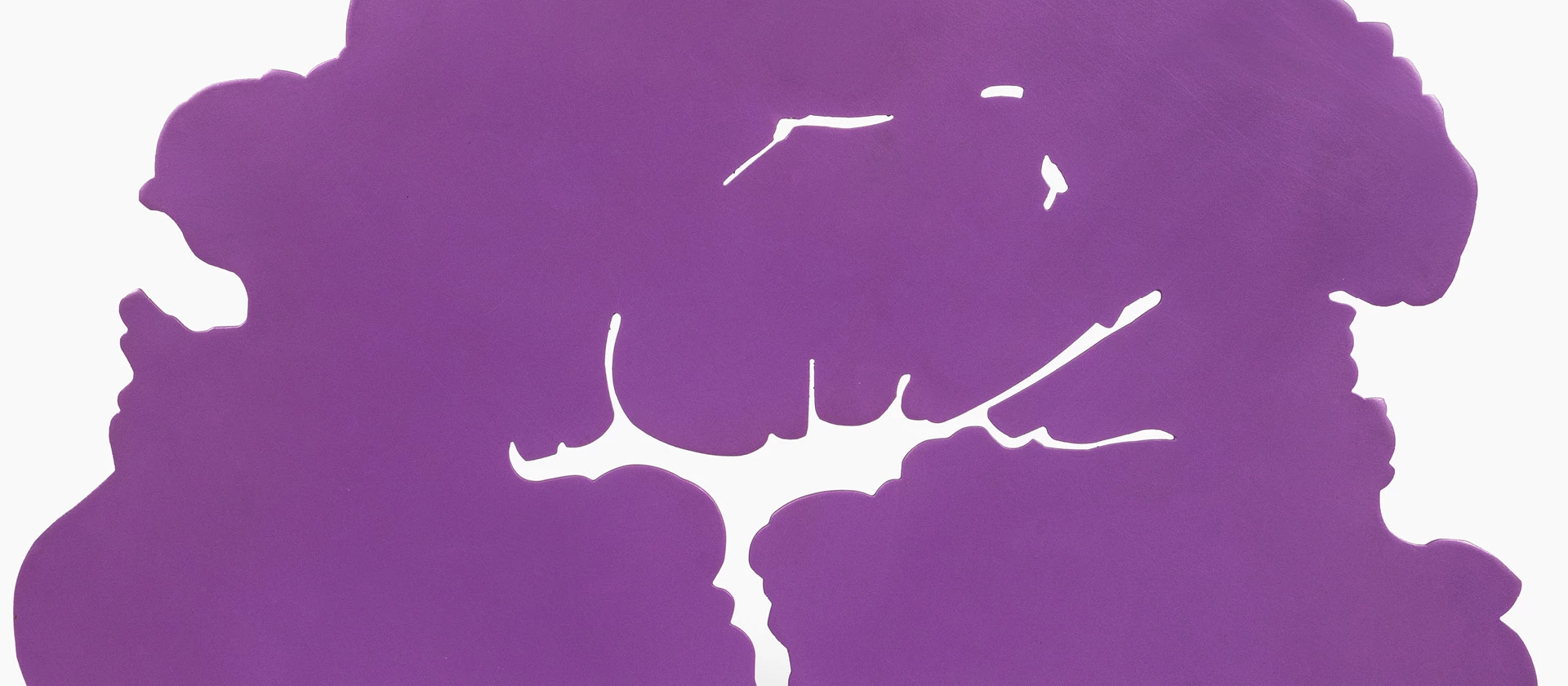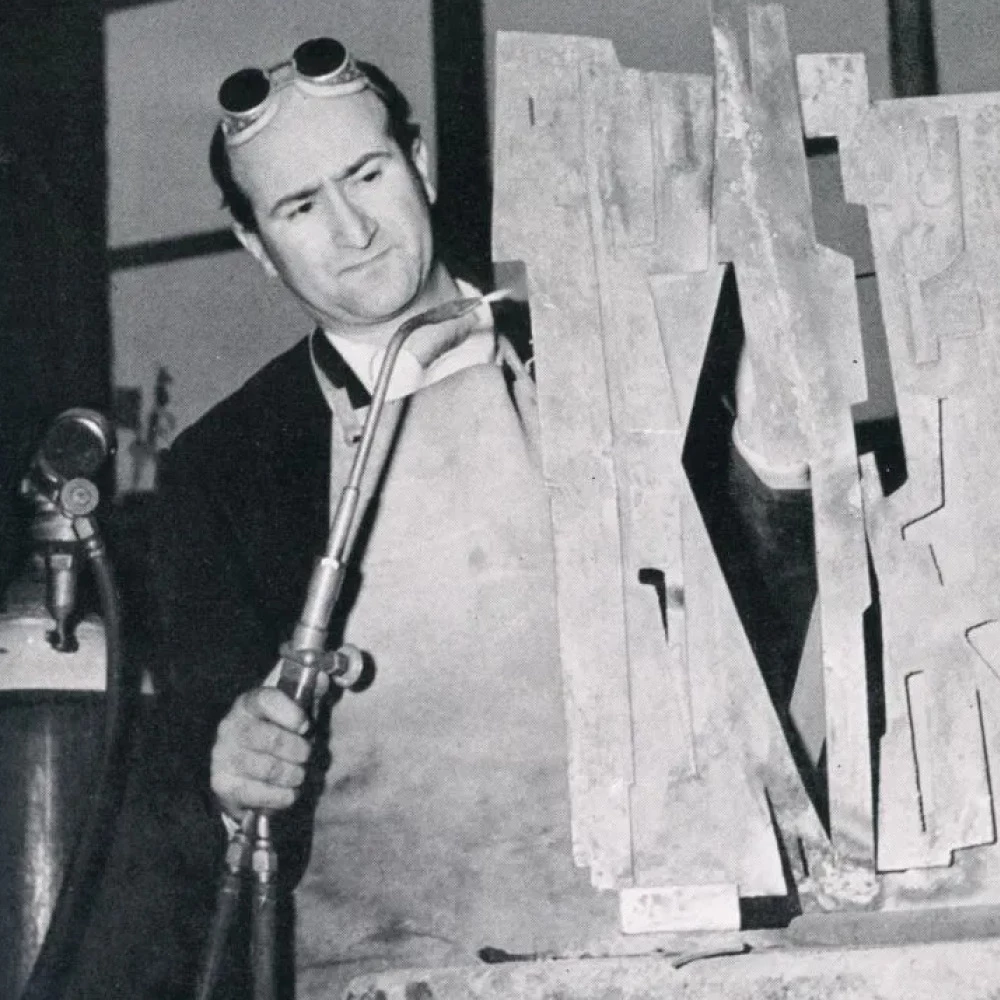Born in Mazara del Vallo in the province of Trapani, Sicily, in 1920, Pietro Consagrastudies at the Academy of Fine Arts in Palermo. In 1944, he moves to Rome, which had recently been liberated by the American landing forces, where he befriends the artists Turcato, Mafai, and Guttuso (with whom he briefly shares a studio in Via Margutta 48). In 1945, he exhibits his work for the first time in a group show at the Galleria Il Cortile in Rome. Together with Accardi, Attardi, Dorazio, Mino Guerrini, Perilli, Sanfilippo and Turcato, on 15 March 1947, at the studio in Via Margutta, Consagra composes the manifesto that was to be published in the first issue of Forma magazine, where the artists declare themselves to be “Formalist and Marxist”, taking a stand against Picasso’s distortion and metaphysical romanticismin the name of “Abstractionism”. After sojourning in Paris between 1946 and 1947, where he visits the studios of Brancusi, Laurens, Hartung, Adam, and visits Pevsner at his house, Consagra starts creating abstract sculptures. In 1948, he exhibits at the Salon des Réalités Nouvelles at the Palais des Beaux Arts. In 1949, together with Arp, Brancusi, Pevsner and others, Consagra is included in the Mostra di Scultura Contemporanea in the gardens of Palazzo Venier dei Leoni (Peggy Guggenheim Foundation) in Venice. On this occasion, Peggy Guggenheim makes her first acquisition of a large-scale work by Consagra for her collection.
Consagra’s Colloqui, which exemplify the artist’s research on frontal sculpture, are presented at the XXVIII Venice Biennale, where Consagra would also exhibit in 1958. In the same year, Consagra has solo shows at the Palais des Beaux Arts in Brussels, the World House Gallery in New York, and, the following year, at the Galerie de France in Paris. In 1960, he is awarded with the International Grand Prize for Sculpture at the Venice Biennale. He is invited to participate in important international exhibitions, including Documenta Kassel (1959, 1964), and Modern Sculpture from The Joseph H. Hirshhorn Collection at the Solomon Guggenheim Museum, New York (1962).
With the advent of Pop Art, Consagra enters a period of self-questioning, during which he begins working intensely with enamel paint, which brings him to a significant turning point: the colored and bifrontal sculpture of the Piani Sospesi(Suspended Planes, 1964-1965). In this series, as well as in his Ferri trasparenti(Transparent Irons) of 1965-66 – pink, yellow, violet, blue, white and turquoise sculptures with curved contours and planes that fragment and swell as if levitating – the conceptual tension of the first Colloqui gives away to the sensuality of a more extrovert language. Following his solo exhibition dedicated to the colored irons at the Museum Boymans-van Beuningen in Rotterdam, in 1967 Consagra moves to America, where he spends one year teaching at the Minneapolis School of Arts. In the same year, he receives an invitation to participate in the exhibition Sculpture from Twenty Countries at the Solomon R. Guggenheim Museum in New York, where, in October, he presents his Giardini, Ferri Trasparenti and PianiAppesi (1966-1967) at the Malborough Gerson Gallery.
In the new Sottilissime (Extremely Thins) of 1968, Consagra experiments with the minimum thickness for a bifrontal work, making the plane two-tenths of a millimeter thick. At less than a tenth of a millimeter, the sheet fails to remain upright and bends, hence the Sottilissime impossibili (Impossible Extremely Thins). At the same time Consagra conceives the Edifici frontali (Frontal buildings), made of steel slabs of the maximum thickness for a bifrontal work (six meters). In his solo section at the Venice Biennale in 1972, the artist presents a work titled La Trama, an imposing installation of seven bifrontal wooden sculptures, which is considered one of the most significant examples of his new research. In the same period, Consagra discovers the fascination of “stones”, including marble, and the infinite polychromatic variations of nature. In the following years, he experiments with architectural design: in 1983, he designs Meeting, a two-faced building bordered by large glass surfaces interacting with the surrounding landscape in Gibellina, where the previous year he had executed La Stella di Gibellina, an iron sculpture twenty-eight meters high. In 1987, he starts the series of Pianeti, works whose brightly painted surface consists of wood sheets superimposed with short thick scraps. IN 1989, Consagra has an important solo show at the Rome Galleria Nazionale d’ArteModerna, which, four years later, opens a permanent room dedicated to thirty-two Consagra sculptures donated by the artist.
Among the numerous awards of his long artistic career, in 2001 Consagra receivesthe gold medal as Benemerito della Cultura e dell'Arte from the Italian president Carlo Azeglio Ciampi. In addition to being a sculptor, Consagra wrote essays and books, including La necessità della scultura (1952), La città frontale and Vita mia(1980), an autobiographical book. In 1995 he settles in Milan, where he dies on July 16, 2005, at the age of 85.

